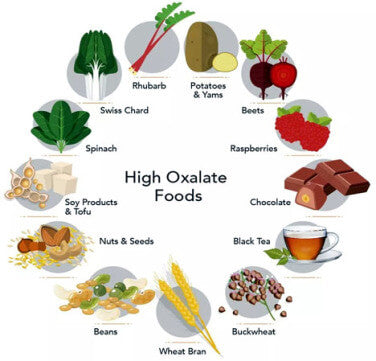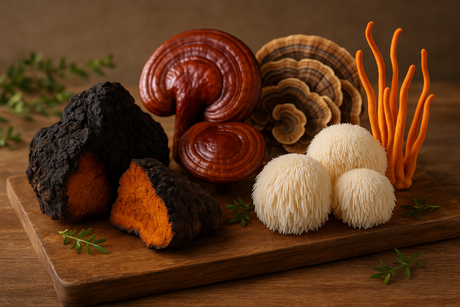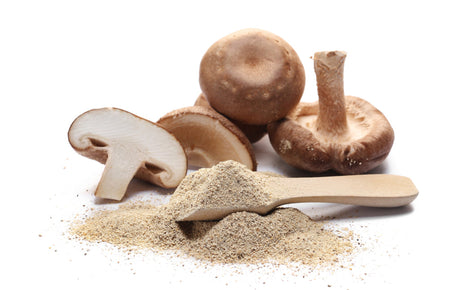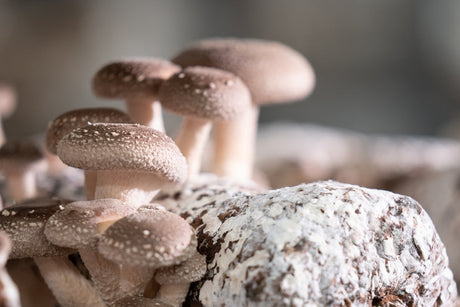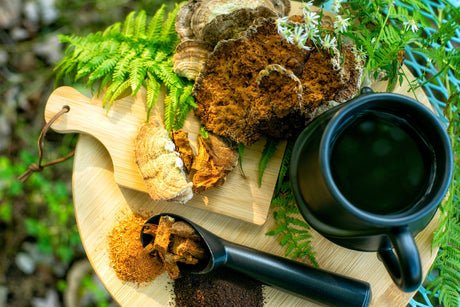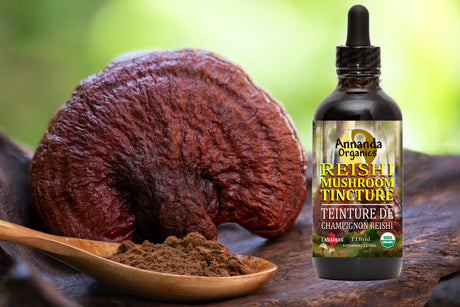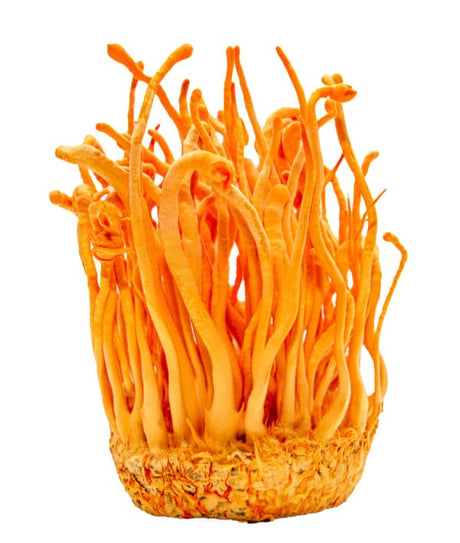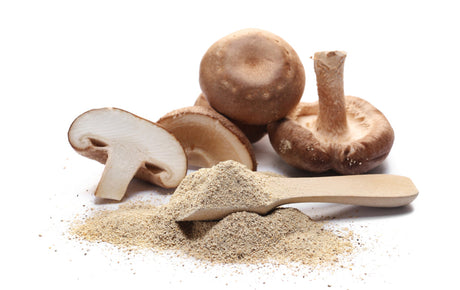A recent study of oxalate levels in twenty species of edible and medicinal mushrooms reveals some interesting results.
There is no immediate need to avoid Chaga or other mushrooms. Oxalates are simply not a concern for most people.(1)
When to be concerned about oxalates
- You suffer from or are at risk of developing kidney stones
- Suffer from osteoporosis
- Can benefit from a low-oxalate diet
You should be aware that some mushrooms have similar levels as other high oxalate foods.

Foods high in Oxalates
- spinach
- beet greens
- almonds
- peanuts
- cereal grains
- chocolate
- some mushrooms
Levels in chaga mushroom are much lower than extremely high foods like spinach, rhubarb and beet greens
Why oxalates may be a health concern
Insoluble vs. soluble forms
Oxalates naturally occuring in food are either soluble or insoluble. Insoluble binds to calcium and sometimes magnesium making them much harder to absorb.
Calcium supplements are often recommended for preventing kidney stones and to help excrete them.
Insoluble
- calcium oxalate
- magnesium oxalate
- iron oxalate
Insoluble means that minerals are not absorbed in the digestive system and pass harmlessly in the feces. They pose no need for concern.
Soluble
- potassium oxalate
- sodium oxalate
Soluble releases negatively charged ions called anions which pass into the bloodstream.
These then bind with free calcium to produce calcium oxalate crystals. Potentially resulting in an increased risk of gout, kidney stones, and physical damage to the kidneys.
Soluble oxalates can deplete calcium levels needed for supporting bone mass. This becomes an issue for those concerned with bone health or reducing the risk of fractures, etc.(2)
Levels of Oxalates in cultivated mushrooms
In a study by Nile and Park, they examined oxalate levels in twenty species of popular wild edible mushrooms.(4) All had very low to moderate oxalate levels.
Most cultivated mushroom species have low levels and are 90% insoluble.
None present
- Hericium erinaceus (Lion's mane mushroom).
- Sparassis crispa (cauliflower fungus).
- Boletus edulis (porcini mushroom)
- Ganoderma lucidum (Reishi mushroom)
Moderate - Moderately high levels
- Cultivated Pleurotus ostreatus (oyster mushroom) 90% soluble form making it a moderate risk.
- Morchella conica (morels) rated at moderate risk.(3)
High Amounts
- Phellinus floriada
- Cultivated Lentinula edodes (Shitake mushroom). 99% insoluble thus harmless
- Sources report either that Chaga has high or extremely high levels, but give no values.
Chaga Oxalates
A NAMA toxicology study reported on the amounts of oxalate in Chaga from Russia, Finland and Thailand.(5)
They performed a hot water extract of each sample to determine their levels.
- Chaga from Russia - 97.6% soluble
- Chaga from Finland - 55.62% soluble
- Chaga from Thailand - 25% soluble
Canadian Chaga
There are no studies to date on oxalic acid found in wild Chaga from North America (Canada & USA).
Canadian Chaga grows in similar circumboreal regions found in Russia. One could estimate that it too would have similar levels to that of Chaga from Russia.
- Studies suggests that chaga has comparable levels to other foods like almonds, peanuts, cereal grains and chocolate.
- Levels in chaga are much lower than extremely high foods like spinach, rhubarb and beet greens.
Oxalates in wild Chaga vs. cultivated Chaga
- Cultivated Chaga is very different from wild harvested Chaga.
- Cultivated chaga lacks the betulin and phytosterols produced by the birch tree. One would expect different levels of oxalates since the chemistry is different.
- Both wild and cultivated Chaga appear both appear to be unstudied
Chaga mushroom induced oxalate nephropathy
Chaga Kidney | Documented case
A documented case of Oxalate Nephropathy documents a 72-year-old Japanese woman who consumed high amounts of chaga mushroom powder. The case is unsubstantiated as she was also suffering from kidney disease and liver cancer and was taking what was thought to be an anti-cancer dose of chaga.
Oxalate nephropathy is a rare condition and may be overlooked due to lack of recognition and understanding of triggers and still requires medical review.
Chaga Kidney Stones | Conclusion
- Until more hard data is available one should consider Chaga a food high in oxalates.
- If you suffer from kidney stones you should limit your consumption of chaga and other high oxalate foods.
- If you suffer from osteoporosis once should limit consumption of chaga or eat foods that are know to be high in oxalates.
- Limit consumption of Chaga mushroom tea to a maximum of 2 x 6 oz cups per day.
- Read our detailed dosage page for more Chaga Warnings, chaga danger and Chaga side effects.
- Seek medical advice if you are concerned about blood sugar levels or the effects oxalic acid may have.
An interesting paradym is the fact that wild chaga contains very high amounts of calcium, magnesium, iron and other minerals. Even as soluble oxalate chelate them, Chaga mushroom offers them in abundance at the same time.
In the end it is the balance of nature that holds the trump card. Refer to our chaga dosage guide and chaga benefits section on how to use chaga mushroom safely to maximum the health benefits.
References
1.Oxalates in Chaga – A Potential Health Threat By Michael W. Beug, Chair NAMA Toxicology Committee
2. Savage GP, Nilzen V, Österberg K, Vanhanen L. 2001. “Soluble and insoluble oxalate content of mushrooms”. International Journal of Food Sciences and Nutrition 53: 293- 296.
4. Nile SH and Park SW. 2014. “Bioavailability Analysis of Oxalate and Mineral Content in Selected Edible Mushrooms” Journal Nutritional Disorders and Therapy
4(1):138 doi:10.4172/2161-0509.1000138 5. Glamočlija J, Ćirić A, Nikolić M, Fernandes Â, Barros L, Calhelha, R, C.F.R. Ferreira I, Soković M, J.L.D. van Griensven L. 2015. “Chemical characterization and biological activity of Chaga (Inonotus obliquus), a medicinal ‘mushroom’” Journal of Ethnopharmacology 162: 323-332.




